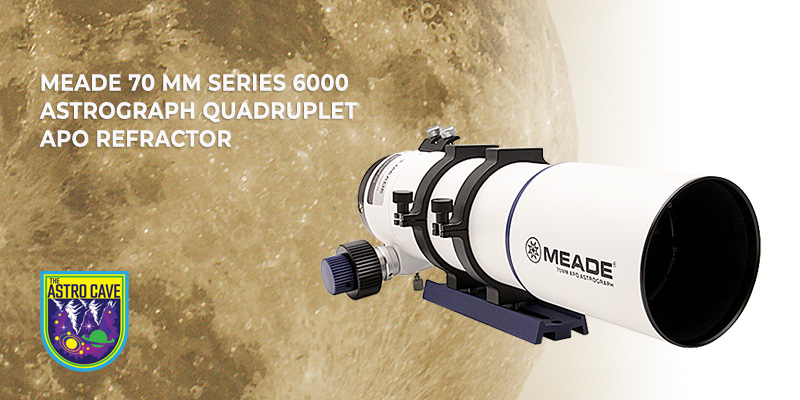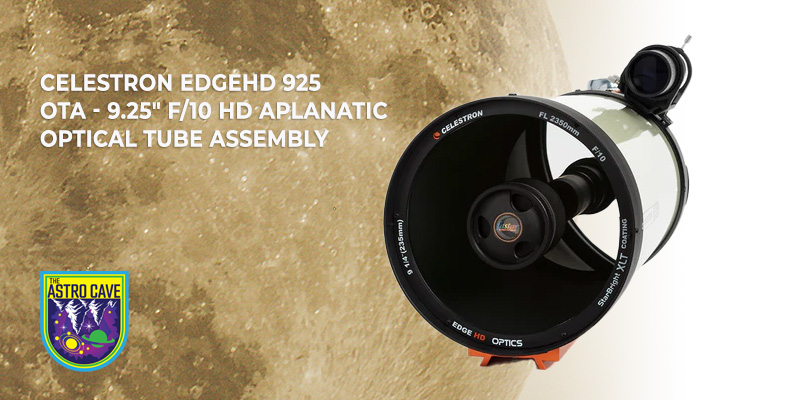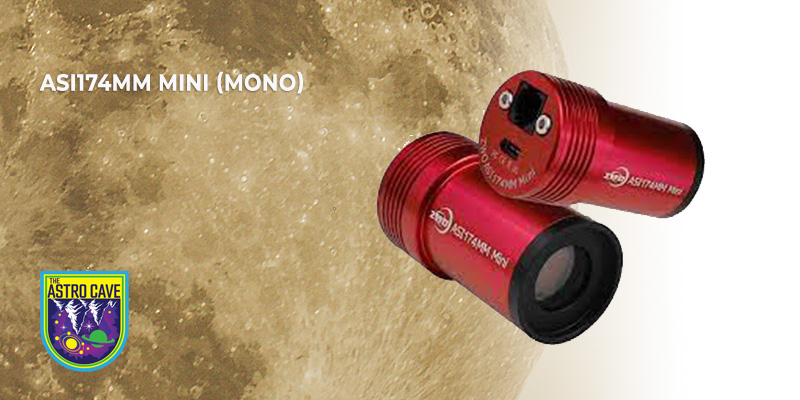The Astro Cave Equipment
Astronomical Lenses

Rokinon 14mm F2.8 Full Frame Ultra Wide Angle:
The Rokinon 14mm F/2.8 is a manual, wide-angle camera lens that comes in Canon, Sony, Pentax, Olympus and Nikon mounting options. The aperture of this lens (F/2.8) comes in handy for the astronomer that’s looking to capture awesome images of the Milky Way. The 115-degree field of view can only be utilized will a full-frame camera, but I have found it to be quite sharp with a crop-sensor DSLR as well. This lens was included in a bundle deal I won on ebay with a sole purpose of wide-angle astrophotography.

Rokinon 135mm F2.0 ED UMC Telephoto Lens:
The Astrophotography work horse was purposely built for Astro photographers. The Rokinon 135mm F2.0 ED UMC Lens is a manual focus telephoto prime lens useful for portraiture and most telephoto applications. Its fast f/2.0 maximum aperture is effective in low light and enables shallow depth of field control. With a rounded 9-blade diaphragm, shallow depth of field imaging will be rendered with pleasing out-of-focus highlights. Compatible with both full frame and APS-C format mirrorless E mount cameras, this lens provides a 35mm focal length equivalence of 202.5mm when used on APS-C cameras. The optical design includes one extra-low dispersion lens element to control chromatic aberration, contributing to sharp, color-accurate imaging, and each of its lens elements features Ultra Multi-Coating to improve light transmission and reduce ghosting and flare. An internal focus system prevents the front end from rotating which allows more effective use of variable filters.
Refractor Telescopes

Meade 70 mm Series 6000 Astrograph Quadruplet APO Refractor:
This Meade 70 mm Series 6000 Astrograph is a true quadruplet-element Apochromatic Refractor (APO) telescope and thus offers unbeatable sharpness in wide field observing and imaging. For any price, Meade Series 6000 ED APO Refractors are among the finest on the market. With 350 mm of focal length (f/5), the impressive Series 6000 Quad APO Refractor is perfect for performing advanced astrophotography. Contains a fully multi-coated quadruplet objective lens constructed from the highest quality FPL53 ED (extremely low dispersion) glass for remarkable contrast and sharpness along with almost no noticeable chromatic aberration or “color fringing.”
Takahashi FSQ-85EDX f/5.3 Petzval Refracting Telescope:
The “Baby Q” Takahashi FSQ85ED telescope is the smallest member of the FSQ Series of flat field astrographs. Designed from the ground up for digital imaging. The Baby Q is the go anywhere, portable astrograph. Weighing less than 9 pounds and measuring 12.68” [322mm] when collapsed, this telescope will fit under an airline seat or fit easily into an overhead compartment for ultimate portability. Takahashi redesigned the optical system in the Takahashi FSQ85ED F5.3 Astrograph Telescope to a modified four element double ED Petzval system. By adding a second doublet inside the tube the removes any astigmatism and acts as a field flattener. The Takahashi FSQ85ED F5.3 Astrograph Telescope optical system is incredible for imaging – providing wide, flat fields, high contrast, and no lateral color. Color correction from the near UV to the near IR ensures tight stellar images across the entire color range.
William Optics Zenithstar 61II APO:
Bright and colorful yet smaller than a house cat, the William Optics ZenithStar 61II is one of the most portable telescopes on the William Optics market. Weighing only about 3 lbs., you can easily take it with you anywhere! Your telescope’s lens captures true-to-color light and creates images with reduced chromatic aberration. It’s designed with FPL-53 glass, which is a form of synthetic fluorite in the closest form to pure fluorite. Capture mesmerizing images with brighter and crisper viewing features. When combined with a field flattener, this telescope can capture images like those of larger professional telescopes.
Sky-Watcher Evostar 120ED APO – 120mm Refractor Telescope:
Sky-Watcher high-performance ED-APO refractors offer premium optical performance for the discriminating amateur astronomer. Refractors are coveted for their superb contrast, high-definition, and coal-black sky background that make stars appear like diamonds embedded in black velvet. Sky-Watcher ED APO refractors utilize the most modern optical glasses and fabricating techniques to deliver the ultimate in high-fidelity astronomical imaging. Subtle details pop as never seen before in telescopes of lesser optical capability. Sky-Watcher ED-APO refractors provide the finest images obtainable – bar none – in their design class. If you are on a quest for the ultimate in pristine, near textbook-perfect astronomical imaging, look no further! Sky-Watcher ED apochromatic refractors deliver dramatic coal-back skies and faithful, contrast-rich views of planetary and deep-space phenomena that are second to none. Sky-Watcher ED-APO refractors are the logical choice as an investment in advanced instrumentation for exceptional viewing or photography.
Mak & Schmidt-Cassegrain Telescopes

Skywatcher Skymax 180 mm Maksutov-Cassegrain Telescope:
Maksutov-Cassegrain telescopes are all about sharp, contrasty images, and the flexibility to use them as a telescope for astronomy, a spotting scope for terrestrial use, a lens for photography…or all three! The Sky-Watcher 180 mm Maksutov-Cassegrain uses a large 7.1” lens system to do the job of gathering light so you can see faint objects millions of light years away. The classic long focal length of f/15 will give you inky dark background skies so that celestial targets stand out beautifully. The Skywatcher 180 mm Skymax comes with a nice selection of accessories, including a 2” 90-degree star diagonal, a 28 mm 2” LET eyepiece, an 8 x 50 straight-through finder for the location and centering of objects, and a Vixen-style dovetail plate, which allows you to mount your telescope on an alt-azimuth or equatorial mount that can handle at least 17 pounds.
Celestron NexStar Evolution 9.25 235mm f/10 AZ GoTo Schmidt-Cassegrain OTA:
The purpose of a telescope is to collect as much light as possible. The amount of light gathered affects the brightness of the resulting image. Unfortunately, there are sources of light loss at each optical surface and within each lens. Fortunately, the right optical coatings and lens materials can minimize the amount of light lost to these sources. Optical coatings are very thin layers of material that are applied to the glass in a process called “vacuum deposition.” The physical properties and thickness of each layer in the coating, as well as their orientation with each other and the glass to which they are applied, determine how well they will do their job. Since the function of a mirror is to collect light by way of reflection, Celestron uses only highly-reflective metallic coatings on these optical elements. A mirror without coatings reflects about 4% of the light that hits its surface, but a mirror coated with standard aluminum coatings reflects about 86-88%—and a mirror coated with StarBright XLT reflects 95%. The materials used in the reflective and anti-reflective coatings are the purest available (exceeding 99.99%) and include aluminum (Al), hafnium oxide (HfO2), titanium dioxide (TiO2), silicon dioxide (SiO2), and magnesium fluoride (MgF2).
Celestron EdgeHD 925 OTA – 9.25″ f/10 HD Aplanatic Optical Tube Assembly:
The Celestron 9.25″ Aplanatic EdgeHD Optics SCT OTA is a remarkable optical tube assembly. Built to satisfy Astro photographers, but also suitable for superior visual observing. Celestron’s EdgeHD Optical Tube is a Aplanatic Schmidt Telescope design producing aberration-free images across a wide visual and photographic field of view. The optical system on the EdgeHD was designed to give an astrograph quality flat focal plane all the way to the edge of the field of view as well as reducing the off-axis star coma. What you will get out of your EdgeHD telescope are visibly sharper images, enhanced mechanical features, FASTAR compatibility, and superior performance all the way around! The difference in EdgeHD optics is that they produce a focal plane more than three times flatter than that from a standard Schmidt-Cassegrain telescope and dramatically flatter than other competitive coma-free designs. The EdgeHD design guarantees you visibly sharp stars across some of the largest CCD chips available today.
Astronomical Cameras
The ASI120MM Mini (mono):
The ASI120MM Mini camera integrates the AR0130CS 1/3″ sensor (4.8 mm x 3.6 mm). It is a new model in the “mini”-series of cameras from ZWO. This camera has 1280 x 960 pixels with a pixel size of 3.75 μm x 3.75 μm. It provides 12-bit ADC and the QE peak is almost 80%. The ASI120 mini-camera offers you very good performance for planetary imaging as well as for guiding. Low read noise, high dynamic range, AR protective window and much more are just some of the key characteristics that set it apart from the competition.
ASI290MM Mini (mono):
The ASI290MM Mini camera integrates Sony IMX290 1/3″ sensor (5.6 mm x 3.2 mm). It is a new model in the “mini”-series of cameras from ZWO. This camera has 1936 x 1096 pixels. The pixel size is 2.9 μm x 2.9 μm. This camera provides 12-bit ADC and its QE peak is over 80%. ASI290MM mini camera offers you very good performance for planetary imaging as well as for guiding. Low read noise, high dynamic range, AR protective window and much more are just some of the key characteristics that set it apart from the competition.
ASI174MM Mini (mono):
The ASI174MM Mini camera integrates Sony IMX174LLJ / IMX174LQJ 1/1.2″ sensor (11.3 mm x 7.1 mm). It is the first model in the “mini”-series of cameras from ZWO. This camera has 1936 x 1216 pixels with a pixel size of 5.86 μm x 5.86 μm. It camera provides 12-bit ADC and its QE peak is 77%. ASI174MM mini camera offers you very good performance for planetary imaging as well as for guiding. Low read noise, high dynamic range, AR protective window and much more are just some of the key characteristics that set it apart from the competition.

ASI462MC (color):
With the ability to capture light in the near-infrared portion of the spectrum, and the super high sensitivity combined with ultra-low readout noise, th ASI462MC camera is considered as the highly improved version of ASI290MC. It will offer great performance for planetary, solar and lunar imaging. Some highlights include:
- Sony IMX462 1/2.8” format 12bit ADC
- 9um pixel size
- Well depth of 2ke-
- Total of 2.1mega pixel accommodating a resolution of 1936*1096
- Ultra-low read noise of 0.5e- to 2.6e-
ASI294MC Pro (color):
The ASI294MC Pro is the first camera in the world equipped with the latest Sony sensor IMX294CJK. This is one of the top-selling cameras from ZWO. Looking at the specifications and comparing it to the relatively low price, it is easy to see why. Some of the highlights include:
- back-illuminated sensor – improving sensitivity and reducing noise
- 4/3” format with 4.63 um pixel size – ideal for many types of telescopes
- 14-bit ADC– giving high dynamic range of 13 stops
- An impressive 7ke- full well capacity- helping to reduce the issue of, for example, saturated stars.
On top of this, it also has a very high QE-value with a peak of over 75%. If you are looking for a small-format OSC camera for astrophotography, you can’t go wrong with the ASI294MC Pro.
ASI2600MC Pro:
The ASI2600MC Pro uses Sony’s latest back-illuminated IMX571 APS-C format sensor with a native 16-bit ADC. It is the color version of the ASI2600MM Pro. It has an impressive range of features that make it a popular choice for astrophotographer. Here are some of the reasons why:
- Ultra-low 0e- readout noise– bringing out more details in your images with improved dynamic range
- Innovative breakthrough design resulting in zero amp-glow– even during long exposures, which means one thing less to worry about in post-processing
- 16-bit ADC sensor– giving a high dynamic range of up to 14 stops!
- 80% peak QE– no need to worry about saturating stars
ASI2600MM Pro (mono):
ASI2600MM Pro uses Sony’s latest back-illuminated IMX571 APS-C format native 16-bit ADC sensor. It’s one of the most anticipated astronomy cameras of 2021. Here is some of the reasons why:
- Ultra-high 14 stops dynamic range
- Ultra-low 1.0e readout noise
- Innovative breakthrough design resulting in zero amp-glow
- 16-bit ADC sensor
Like the color version, the ASI2600MM Pro also has a very light weight of just 700 grams.
Alt-Azimuth and Equatorial Mounts
Celestron Advanced VX Mount and Tripod:
The Advanced VX (AVX) sets a standard in mid-level telescopes, providing many of the features found on Celestron’s most sophisticated German equatorial mounts at an extremely affordable price. The Advanced VX mount is designed to provide superior performance for smaller telescopes while taking advantage of Celestron’s most advanced technologies: All-Star Polar Alignment, Celestron PWI telescope control software, SkyAlign, and permanently programmable periodic error correction (PPEC). The Advanced VX is the smallest of Celestron’s German equatorial mounts. The computerized GoTo capability automatically tracks objects as they move across the night sky. The Advanced VX mount includes ports for a hand control, an autoguider, and 2 AUX ports for optional accessories. The NexStar+ hand control gives you instant access to all the functions your mount has to offer. With automatic slewing and menu descriptions, any level of astronomer can master this mount in just a few observing sessions. The Advanced VX also has an impressive tripod for its class with a 2” diameter steel tripod legs providing an extra-wide stance for improved stability.

Celestron NexStar Evolution Mount & Tripod:
Celestron engineers designed the NexStar Evolution based on years of customer feedback. It offers many thoughtful design features that combine to provide you the best possible experience out under the stars. Forget about batteries or an external power supply. For the first time ever on a consumer mount, NexStar Evolution includes its own built-in lithium-ion battery so that you will be able to enjoy stargazing marathons of up to 10 hours on a single charge! You can even use NexStar Evolution’s USB charge port to top off the other devices in your life that need to stay powered on during an observing session. Setting up your NexStar Evolution is quick and painless with large, ergonomic handles. The steel tripod features leg etchings to help you achieve a level, uniform height for your telescope. Manual clutches in both altitude and azimuth offer greater flexibility to manually point the telescope when powered off. Store up to 7 eyepieces in 2 accessory trays, one with an adjustable red LED illuminator.
Sky-Watcher EQ6-R Pro Computerized Equatorial Mount and Tripod:
With a weight capacity of 44 pounds, the beefy and thoughtfully designed Sky-Watcher EQ6-R Pro Computerized Equatorial Mount is just the thing for amateur astronomers and Astro-imagers who use all but the largest of telescope optical tube assemblies. The Skywatcher EQ6R Pro Mount has a belt drive system and stepper motors for accuracy in finding and tracking celestial objects, and Skywatcher’s tried-and-true SynScan hand controller offers up a 42,900 object database, special tours of the night sky, permanent periodic error correction, backlash compensation, the ability to set slewing limits, park, and polar alignment assist via the built-in illuminated polar scope. The EQ6-R Pro mount also has an ST4 auto guider port.
“Stay challenged”
“Mag.7 or Better Skies”
“Superstition is to religion what astrology is to astronomy; the mad daughter of a wise mother.”
‘The heavens declare the glory of God; the skies proclaim the work of his hands.” – Psalm 19:1 NIV















